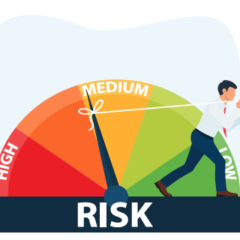Last updated on
What are Symptoms of a Blood Clot?
Blood clots can be dangerous or even life-threatening if left untreated. It’s important to know the signs, so that you can seek medical care when necessary. Please keep in mind that similar symptoms can also be caused by other conditions. It’s crucial to seek a professional medical opinion if you’re experiencing these symptoms, rather than trying to diagnose yourself on your own.
There are two major types of blood clots. A venous thromboembolism, or VTE, is a clot that forms in a vein, which is one of the low-pressure blood vessels that carry blood back to the heart, or in the blood vessels carrying blood from the heart towards the lungs. An arterial blood clot forms in an artery, which is one of the higher-pressure blood vessels that carry blood from the heart out to the tissues. Some examples of arterial blood clots include heart attacks and strokes.
In this article, we’ll focus on venous blood clots. There are two main types: deep venous thrombosis (DVT) and pulmonary embolism (PE). Both types have the potential to be dangerous if left untreated, so it’s important to know what to watch out for.
Signs and Symptoms of Deep Venous Thrombosis (DVT)
A deep venous thrombosis, or DVT, occurs in a vein. By far the most common site is in the leg, but they can also occur in the arm. (More rarely, a DVT can occur in the abdomen.) The symptoms will occur only on the affected side, while the opposite side remains normal. This is one of the major clues that the cause is likely to be a blood clot.
Some of the possible symptoms of a DVT in the leg or arm include:
- Pain in one area, which might feel like a muscle cramp. This is caused by the pressure of blood building up behind the clot.
- Swelling in the affected area, which is also a result of pressure building up.
- Redness, which is usually diffuse (spread out over the affected area). This is caused by inflammation, which is triggered by the clot.
- A feeling of warmth in the area, which is also a sign of inflammation.
It’s very common for the symptoms of a DVT to be dismissed as a pulled or torn muscle, or as having “slept funny” on the affected leg. This leads many patients to delay seeking medical care once their symptoms begin. Unfortunately, even many physicians make this mistake, particularly if the patient doesn’t have known risk factors for a clot.
You can try stretching the muscle that feels like it’s cramping (for example, bringing your toes upward towards your shin, if it’s your calf that hurts). This will make a muscle cramp feel better, while the pain of a clot will usually stay the same or get worse when you do this. However, if you suspect you may have a blood clot, don’t rely on this one test – seek medical attention.
The delay in diagnosis of DVT is dangerous. Left untreated, a DVT can progress to a much more dangerous and even life-threatening condition, known as a pulmonary embolism.
Signs and Symptoms of a Pulmonary Embolism (PE)
A pulmonary embolism, or PE, occurs when part of a blood clot breaks off and travels through the veins to the heart. From there, it makes its way into the blood vessels of the lungs, where it blocks blood flow through the arteries. This can lead to a variety of symptoms, including:
- Shortness of breath, which usually appears suddenly.
- Chest pain, which is often sharp and gets worse when you take a deep breath.
- Feeling lightheaded or fainting.
- Heart palpitations, or a heartbeat that’s fast and/or irregular.
- Cough. You may cough up some blood.
If you believe that you may have a DVT or PE, please seek immediate medical attention. The earlier a clot is diagnosed, the greater the likelihood that treatment will be able to avoid serious health complications. It’s better to seek medical care earlier, rather than waiting and risking long-term health problems.



